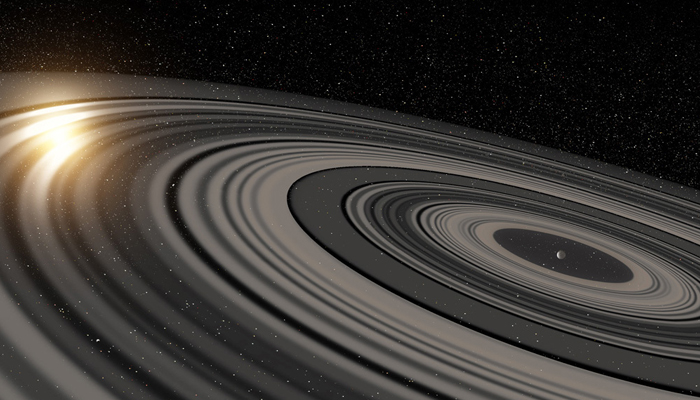What do we know about exoplanet with massive ring system?
When a planet passes in front of its star, it prevents the light from coming
April 30, 2024

When there’s a discussion about planets with rings, one name pops up in our mind; Saturn, but there are also three other celestial bodies in our solar system that are also surrounded by rings; Jupiter, Uranus, and Neptune.
By far, in our solar system, Saturn has the most number of rings, but there’s a candidate much bigger than this.
Astronomer Eric Mamajek discovered planet J1407b in 2012 which is 20 times larger than Saturn and has 200 times bigger rings — 180 million kilometres wide — than the gas giant.
The giant exoplanet is orbiting a brown dwarf star which is at the distance of 433.8 light years from Earth in the constellation of Centaurus.
When a planet passes in front of its star, it prevents the light from coming. With this calculation, Jupiter could block a mere 1% of the Sun’s light. J1407b blocks 95% of light coming from J1407.
Mamajek found that the star J1407 was young and had an estimated age of 16 million years. It is the first exoplanet that has rings equal to that of Venus’s orbit of the Sun.
An analysis authored by Mamajek published in the Astrophysical Journal, showed in 2015 that the ring system consists of more than 30 rings, each of them tens of millions of kilometres in diameter.
Matthew Kenworthy of the Leiden Observatory in The Netherlands noted: "If we could replace Saturn’s rings with the rings around J1407b, they would be easily visible at night and be many times larger than the full moon.”
Scientists estimated that the rings will become thinner in the next several million years and will eventually fade.











